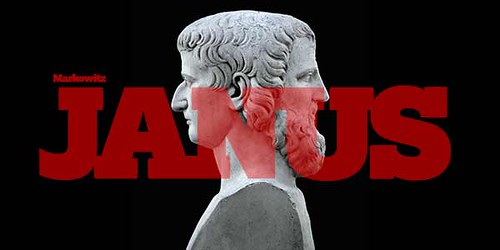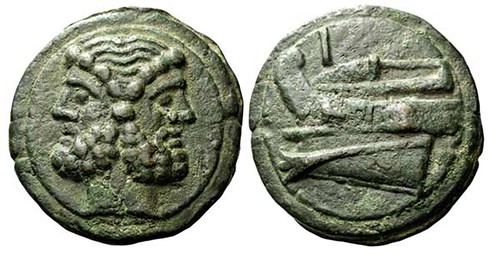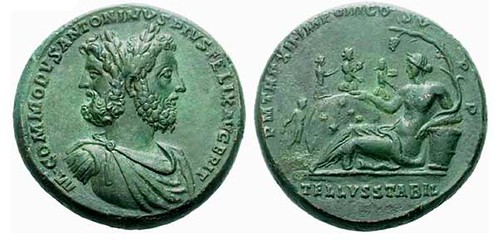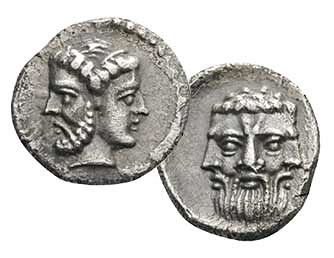
PREV ARTICLE
NEXT ARTICLE
FULL ISSUE
PREV FULL ISSUE
COINS OF JANUS, GOD OF JANUARYHere's an excerpt from another Mike Markowitz CoinWeek Ancient Coin Series article (published January 4, 2017). This week's subject is Janus, the God of January.
-Editor
 ANCIENT ROMANS KNEW even less about the prehistoric origins of their religion than we do, since we have knowledge from centuries of archaeology. Latin writers of the Classical era tried to connect their own native Italian gods to the prestigious gods of ancient Greece, with their complex genealogies and deep cultural and artistic associations. So Jupiter is Zeus, Juno is Hera, Minerva is Athena, Bacchus is Dionysus, and so on. But some Roman gods had no Greek counterpart. Foremost among these is Janus, god of doorways, beginnings and endings. The first month of our calendar is called January in his honor. Roman artists represented Janus with two faces: one looking right (forward into the future), the other looking left (backward, into the past). Beginning in the third century BCE, this striking, powerful image appears on Roman coins. Ancient coins depicting Janus or similar figures (“janiform heads”) include common types, as well as some of the most spectacular and rare. Cast Bronze  Around 240 BCE the head of Janus appears on the massive, crudely cast bronze as of the Roman Republic. Initially these weighed about 285 grams; by 212 BCE they had fallen, through successive reductions, to about 66 grams. On Harlan Berk’s list of the “100 greatest ancient coins” (Berk, 60), this type--the aes grave as--ranks as #34. High-grade examples typically sell for around $3,500 USD and up. Mad Commodus  Possibly struck for New Year’s Day 187, a magnificent bronze medallion of Commodus, the demented ruler played by Joaquin Phoenix in the film Gladiator (2000)[4], represents the emperor himself as one face of Janus. A cataloguer for Numismatica Ars Classica observes that: The portrait that faces right bears the obvious features of Commodus, and the orientation of the bust favors him; the portrait facing left has entirely different features, and it presumably represents Janus. However, it may have been taken – at least in jest – to represent Cleander, the former slave from Phrygia who had risen to become Commodus’ prefect and indispensable servant. Janiform Heads Numismatists use the term “janiform” as a catch-all for heads with two faces. Janus was always bearded, but we see coins with two beardless faces on the same head, and even heads with one male and one female face. The Greek island of Tenedos issued such coins for centuries. A magnificent early didrachm (ca. 490-480 BCE) in archaic style sold for $180,000 in a 2012 auction[. A tetradrachm in Hellenistic style (ca. 180 BCE) brought over $24,000 in a 2008 European sale In 2007, this exquisitely bizarre piece sold for over $74,000 To read the complete article, see: Wayne Homren, Editor The Numismatic Bibliomania Society is a non-profit organization promoting numismatic literature. See our web site at coinbooks.org. To submit items for publication in The E-Sylum, write to the Editor at this address: whomren@gmail.com To subscribe go to: https://my.binhost.com/lists/listinfo/esylum All Rights Reserved. NBS Home Page Contact the NBS webmaster 
|
